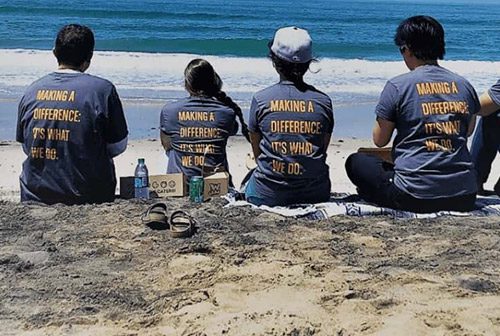Few of us think of the water quality implications of stopping at a traffic light or inching along in rush hour traffic. But every time you apply your brakes you are contributing to copper pollution in our creeks, bays and beaches. The problem is that most cars have brake pads made with copper. When you stop, copper dust is deposited on the roadway. With irrigation flows or rain, the copper is carried into our local waterways. Copper in our environment can be toxic to aquatic wildlife especially at the base of the food chain.
In San Diego, cities are under tight deadlines to reduce copper polluting our local waterways. Finding ways to stop copper at its source helps cities facing costly treatment options or fines for lack of progress. As an advocate who lobbied for many of the restoration plans and permits cities now have to implement, I wanted to help where I could. San Diego Coastkeeper teamed up with environmental groups like Sustainable Conservation in the Bay Area, who has been working in this area for years to help craft a plan to address the copper in brake pads. But first we had to find a legislator to help us.
Regulators have been aware of the problem since 1996, but nearly 15 years passed before environmentalists, local governments and brake pad manufacturers could come to agreement. The bill, SB 346, that ultimately passed this year was championed by State Senator Christine Kehoe. Senator Kehoe understood the need to keep vehicle safety in mind while pushing the industry to find copper alternatives. SB 346 requires brake pad manufacturers to reduce the use of copper to no more than 5 percent by 2021 and no more than 0.5 percent by 2025.
When the bill was signed by Governor Schwarzenegger in September I was glad to finally start down the road to phasing out copper brake pads. It’s nice to know our everday activities are getting just a little greener.













